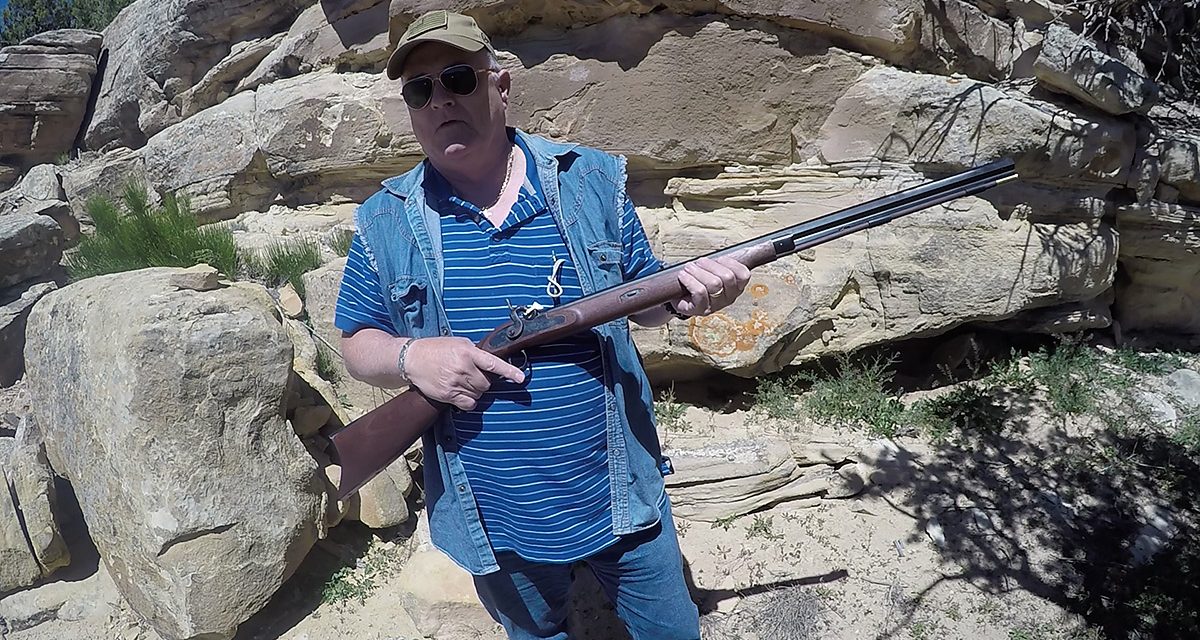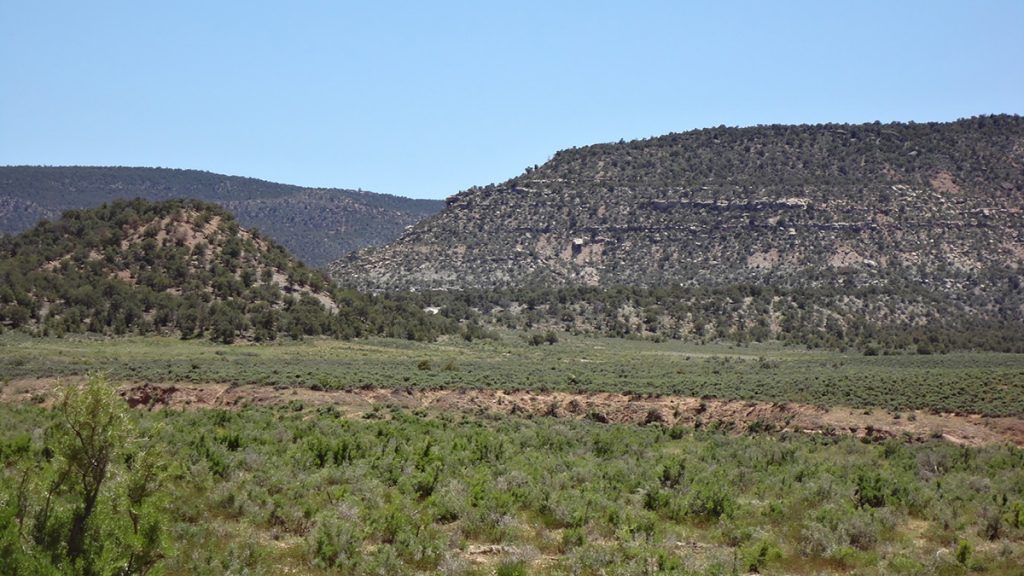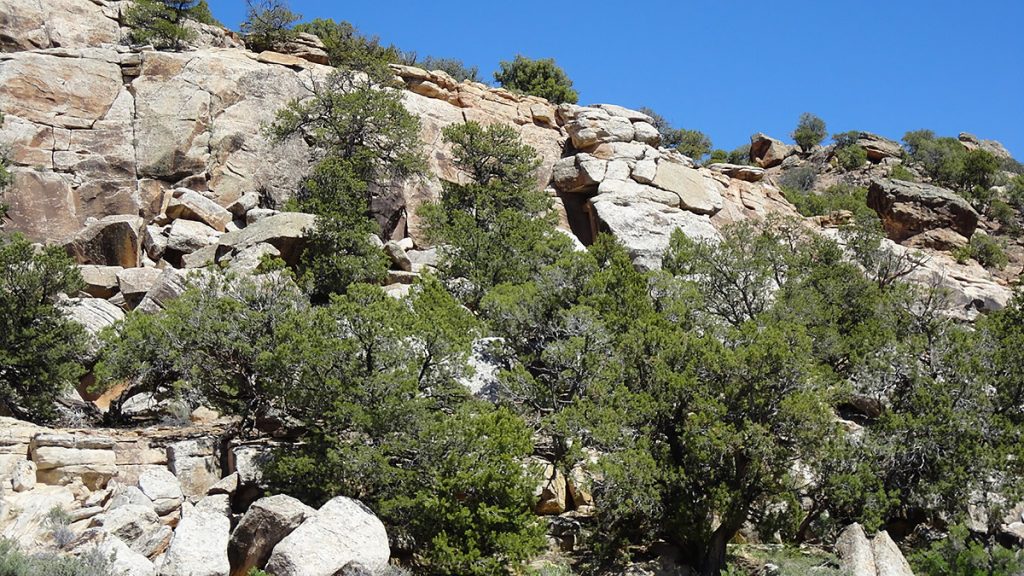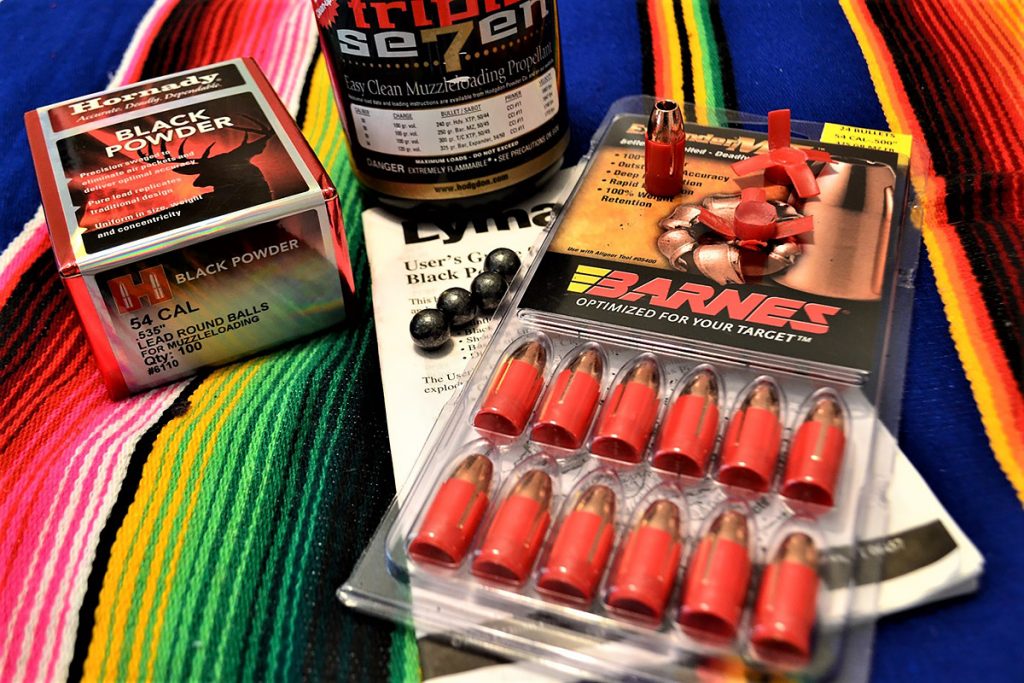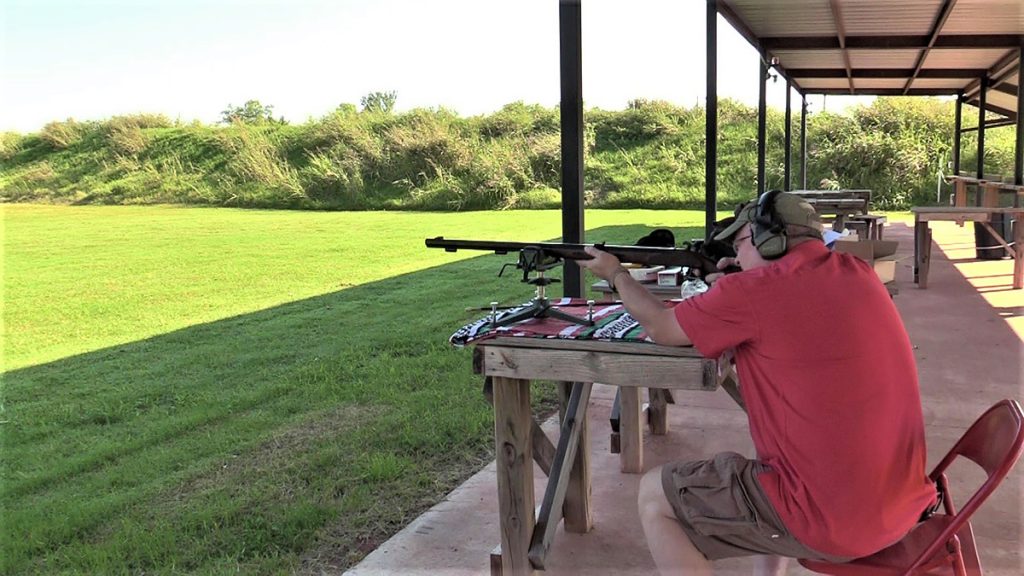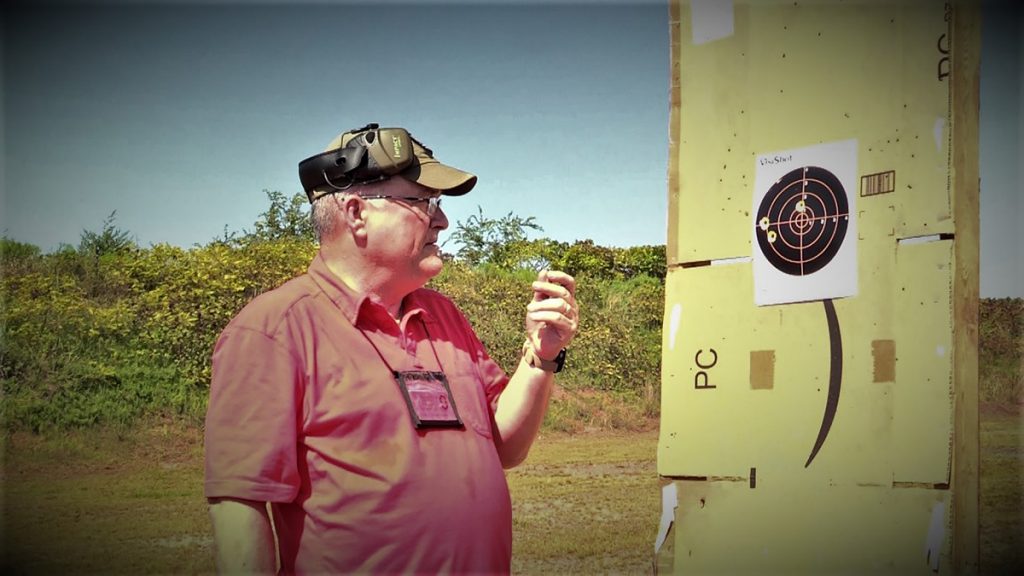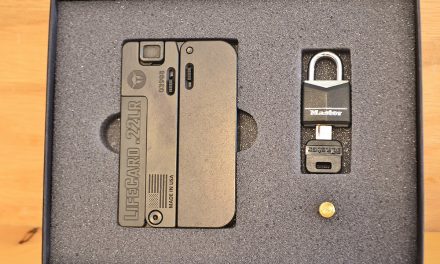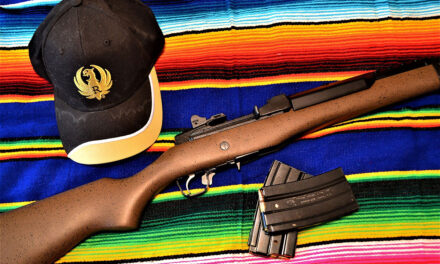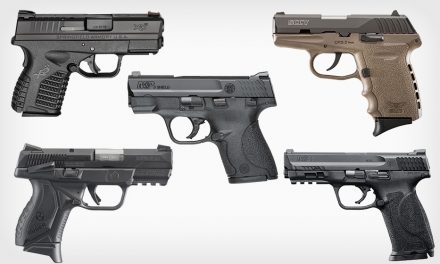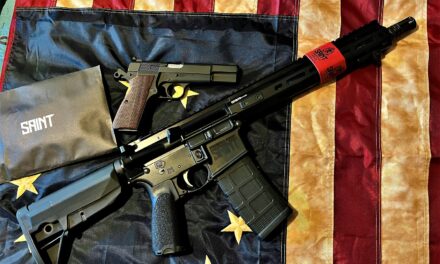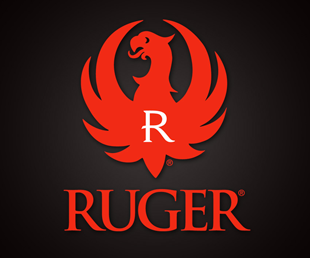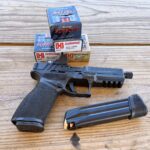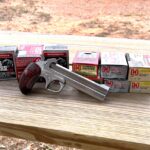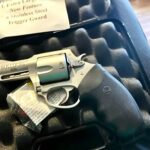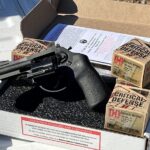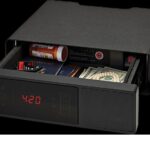Hawken Style Percussion Black Powder Rifle with Coil Spring Lock
As Elijah walked along the flowing banks of the Akansa River (later known as Arkansas River). The water flowed slowly and clear as to be able to see fish at the bottom. In the Great Plains west of Missouri, there were very few trees. On either side of the river bank were endless waving prairie grass as high as a man’s head. The wind blew all the time in this country causing the illusion of ocean waves. The warm sun was shining on his face. It was early May with summer coming fast.
The tall grass gave Elijah some concern, as two and four legged dangers could be lying feet away. The year was 1840 and Elijah and six other adventurous men are headed up this river on their way to Bents Fort. At Bents Fort they will resupply and head on up the Akansa River into the mountains to trap beaver and explore for a passage through the Rockies.
Elijah and his troop are mounted on mules with three mules as pack-animals. He was walking the banks of the Akansa looking for sign. There were beaver up and down the tributaries of this river but not in the quantities they needed. Winter is the time to harvest the beaver as their valuable fur will be thicker and bring a good price. As Elijah walked the river bank, he stopped and froze in mid stride. Before him was a track he had never seen but was told about.
Elijah stood there peering into the tall grass with ears intently listening. No sign of danger. He bent down on one knee to get a better look of this track. He took his hand to measure the size. This was a huge bear. Much larger than the black bear of Missouri. He had been told about these bears. Grizzly is what they called them. This right front paw was 12 inches long and around 9 inches wide. The track was deep in the river bank. In contrast, his foot print sunk into the ground no more than the length of his little finger nail. This track was as deep as the length of his little finger. Elijah weighed 200 pounds of muscle and bone. This bruiser will tip in around 900 pounds. Surprisingly heavy for four months out from hibernation.
Just then Elijah heard men yelling and a scream. He had no illusions of what this meant. He ran toward the sound which was coming from their camp. As he sprinted, he heard two shots, mules bellowing, men cussing and a scream rich with human pain. As Elijah ran, he readied his .54 caliber Hawken. He mentally inventoried his weapons. He had the custom-built Hawken, his tomahawk, one new cap-lock pistol in .54 caliber and his nine-inch knife. As he rounded a tall stand of willows and grass, Elijah heard the distinct angry roar of a bear.
There before him was a huge very angry bear facing off two of his men. One on the ground and one waving a chunk of burning firewood in the face of this massive bag of fur, teeth and claws. Instinctively Elijah dropped to one knee. He brought his Hawken to his shoulder and cocked the hammer back. He took aim at the bears head across a distance of 90 feet. He pulled the set-trigger and then pulled the Hawkins trigger. The boom and kick of this big rifle was barely noticed. The big bruin dropped to the ground. Seconds ago, there was mass confusion, men screaming, mules bawling and the big Grizzly tearing up everything in sight. Now there was a man moaning, one cussing and one praying.
Lyman .54 Caliber Great Plains Hunter A Piece of History
Lyman offers a great version of the famous Hawken percussion rifle model Great Plains Hunter. For those of you who are steadfast in using traditional black powder firearms, the Lyman .54 Great Plains Hunter is an amazing representation of the historically famous Hawken. In fact, the Hawken rifle was highly prized by those adventurous men who crossed the vast prairie to the Rocky Mountains. Historically famous Mountain Men such as Jim Bridger, John David Albert, John “Liver-Eating” Johnson and many others all prized the Hawken style rifle. The Hawken was engineered and developed in 1815 in St. Louis Missouri by Jacob and Samuel Hawken. They made each rifle one at a time. The first Hawken’s were a flintlock action and later the percussion cap.
Lyman sent me their .54 Caliber Great Plains Hunter Hawken for test and evaluation. Upon its arrival, I took the stock and rifle barrel out of the box and assembled them together. A very simple thing to do. In looking over this Hawken rifle I quickly could see the quality and craftsmanship of the Italian makers. The European Walnut stock was beautiful. In the video herein, I misspoke and said the stock was made of American Walnut. However, the stock is a very strong walnut.
Lyman’s Great Plains Hunter Hawken has a 32-inch octagon barrel with an elevation adjustable iron sight. This firearm has an overall length of 50 inches and tips in at nine pounds. The barrel has a dark blue finish which fits very nicely with the dark walnut stock. The barrel twist is 1:30 and a width of 15/16 inches. I love the adjustable double-set trigger. Right out of the box, I would set the front trigger up by pulling the back trigger. I then placed my index finger on the front trigger and thought about pulling. Boom and the round headed downrange. If I had my own personal Lyman Hawken, I would set the front trigger to be a little less touchy. Safety first. The good side, I did not flinch or jerk the trigger. I just thought about pulling and the rifle went off. A hair trigger…..yes. Luckily there is an adjustment screw to set the front trigger.
The European Walnut stock was finished in a hand rubbed oil finish. I finished my .45 caliber percussion rifle in the same manner. I prefer a working rifle to have this type of finish over an artificial synthetic finish. Along with the walnut stock the ramrod is made of wood as well. I do not know what kind of wood but I would say some form of oak as the grain was fairly tight. I found no problem using this ramrod to load my test Hawken. However, I would prefer a carbon fiber ramrod over the wood as I saw a friend of mine snap his wood ramrod (non-Lyman product) plunging the jagged end into his hand. But after many rounds fired by myself and Gridley, we had no problem or any sign of a problem with the furnish wood ramrod.
In shooting the Lyman in Colorado canyon country and on the Oklahoma City Gun Club Black Powder Range, I had no problems of any kind. The Hodgdon Triple Seven powder was easy to use and easy to clean up. We, earlier I, fired the Hornady .54 caliber ball and the Barnes sabots bullets. As reported in the video in this article, the Hornady ball were a little tight loading with pre-greased patches. In the past with other such firearms, it was easier to load the lead balls. The fact I had never loaded and fired a .54 caliber may have something to do with this experience. The sabot was even harder, but once I greased the plastic sleeve sides, it was much easier to ram it into the barrel. This is no reflection on the Lyman Hawken, Hornady Ball or the Barnes Bullets. It was just a learning curve for me on the “Big Boy” percussion rifle.
In firing the Lyman Great Plains Hunter Hawken .54 Caliber rifle, I found the recoil was more of a push than a sharp snap as modern day big bore rifle. It was pleasant to shoot and really a fun time for Gridley and I. We each fired sever rounds of ball and sabot. At 50 yards we both shot one to two inches to the left. Everybody’s eyes are different, hence the windage adjustment on firearms. To adjust the windage on the Lyman Great Plains Hunter, you must tap the rear or front sight over. In our case we would have had to tap the rear sight to the right. Since this firearm was not mine, I made no adjustment. I did not want to take a chance in marring the excellent finish on this rifle.
Never the less, with practice and my corrective lens shooting glasses, I could tighten up my grouping a great deal. Because of the need for sight windage adjustment, we did not attempt the 100-yard shot. It would have been an exercise in futility, a waste of excellent ball and sabot and powder.
Conclusion
Lyman’s Great Plains Hunter Hawken .54 Caliber rifle is an excellent product. Gridley and I had a great time shooting this rifle. It was Gridley’s first time shooting a black powder firearm. It was my first time shooting a .54 caliber percussion firearm. The Lyman Hawken performed without a hitch. The Hornady Ball and Barnes Sabot flew straight and functioned as they were designed. The Lyman Hawken is an accurate firearm. More accurate than I could shoot at the time of the video. With a couple of bottles of the Hodgdon powder, proper windage sight adjustment, and some shooting time, I would be able to tighten up the grouping. I believe I would adjust the set-trigger to be a little less touchy, for nothing else other than being safe. The trigger pull, light as it was, was crisp.
The only change I would make for this percussion rifle, would be to down size to a .50 caliber. The reason is, I had a great deal of difficulty finding .54 caliber projectiles. I had a problem finding FFg powder of any kind. There was plenty of FFFg and FFFFg, but no FFg to be had. I checked the large box stores, regional box sporting goods stores with no luck. It might be just this area. Preppers preparing for the “End of Time” may have bought up all of the FFg. Many black powder hunters here in Oklahoma use the Inline rifles. To me this is, just my thinking, like hunting with a modern hunting rifle. I know some states have black powder and primitive hunting seasons which would separate the use of these two types of black powder firearms. But for me, it is more enjoyable to stalk the game with a one and done shooter like my ancestors.
The Lyman .50 caliber is the exact same as the .54 caliber. The only difference is the Lyman .50 caliber percussion rifle can be ordered for a left-handed shooter. The .54 caliber model does not have this option. I think this is a very consumer friendly feature. So, in closing, I loved the Lyman Great Plains Hunter. It was fun to shoot. There is no doubt I could take any antler game and even big game with lots of claws and fangs. If you are in the market for a high-quality percussion rifle or pistol, Lyman is something you should consider.
Lyman provides many more products other than firearms and reloading product. Check them out at the link below.
Lyman .54 Caliber Great Plains Hunter
- Caliber: .54 CALIBER
- Barrel: 32 inches
- Barrel Color: Dark Blued
- Barrel Twist Rate: 1:32 inches
- Barrel Width: 15/16 inch
- Stock: Oil Finished European Walnut.
- Trigger: Adjustable Double-Set Style
- Custom Wooden Ramrod CLEANING JAG INCLUDED
- Sights: Adjustable Iron Sights (elevation)
- Sights: Windage can be tapped to zero in.
- Overall Length” 50 inches
- Weight: 9 pounds
MSRP: $791.95
Lyman Products
https://www.lymanproducts.com
Lyman’s Great Plains Hunter Hawken
https://www.lymanproducts.com/brands/lyman/muzzle-loaders/great-plains-hunter-rifle
Hornady
https://www.hornady.com
Hornady Round Ball
https://www.hornady.com/muzzleloading/browse/54-cal-530-lead-balls#!/
Barnes Bullets
https://www.barnesbullets.com
Barnes Expander MZ
https://www.barnesbullets.com/muzzleloaders/expander-mz/
Hodgdon
https://www.hodgdon.com
Hodgdon Triple Seven Powder
https://www.hodgdon.com/triple-seven-ffg-ganular-powder/

